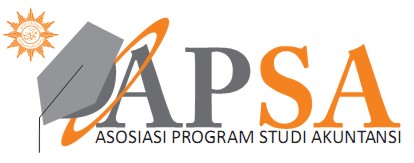Antecedents of perceived usefulness on the use of electronic hospital management information systems
DOI:
https://doi.org/10.18196/jai.v25i1.19120Keywords:
SIMRS, Technology Acceptance Model (TAM), Unified Theory of Acceptance and Use of Technology (UTAUT)Abstract
Research aims: This study aims to analyze the factors that influence SIMRS and examine the mediating effect of perceived ease of use on the factors that affect SIMRS.
Design/Methodology/Approach: This explanatory research used a quantitative approach through survey methods. The population in this study was doctors practicing in the outpatient polyclinic of XYZ Hospital, totaling 80 doctors using the total sampling. Data collection techniques employed a scale and analyzed utilizing Smart Partial Least Square (PLS).
Research findings: According to the research findings, all examined indicators were found to be positively and substantially correlated with perceived ease of use by the following variables: computer self-efficacy, trustworthiness, technological risk, facilitating conditions, and degree of openness. Although all but the degree of openness exhibited a significant correlation with perceived usefulness, the remaining indicators did not. In relation to perceived usefulness, all factors exhibited a positive and statistically significant association with perceived ease of use as a mediator.
Practical and Theoretical Contribution/Originality: In terms of practical and theoretical contributions, these findings offer valuable insights for hospitals, emphasizing the importance of enhancing doctors' knowledge, openness, and confidence in adopting SIMRS technology. Recommendations offered include increasing computer literacy among doctors, mitigating risks associated with SIMRS, and improving access to healthcare services.
Research limitation: In this case, the research limitation stems from the need to explore further additional characteristics, such as computer self-efficacy, trustworthiness, technological risk, facilitating conditions, and perceived ease of use, as they may impact perceived usefulness across various variables. Future research should expand its scope and population, employing comprehensive data collection techniques to maximize research outcomes.
References
Adi, A. Z., Wulansari, Y., Julianingsih, D., Widya, T. R., Khoirunisa, A., & Ramadhona, N. (2022). The Effect of Digital Technology on Student Policy, Academic Achievement and Outcomes. 2022 IEEE Creative Communication and Innovative Technology (ICCIT), 1–10.
Al-Nuaimi, M. N., & Al-Emran, M. (2021). Learning management systems and technology acceptance models: A systematic review. Education and Information Technologies, 26(5), 5499–5533.
Al-Rahmi, W. M., Yahaya, N., Aldraiweesh, A. A., Alamri, M. M., Aljarboa, N. A., Alturki, U., & Aljeraiwi, A. A. (2019). Integrating technology acceptance model with innovation diffusion theory: An empirical investigation on students’ intention to use E-learning systems. Ieee Access, 7, 26797–26809.
Alhaq, M. I., Absah, Y., & Wibowo, R. P. (2022). Evaluation of the Implementation of Hospital Management Information Systems (SIMRS) Using the Hot–Fit Method at Al Fuadi General Hospital, Binjai. 19th International Symposium on Management (INSYMA 2022), 529–538.
AlQudah, A. A., Al-Emran, M., & Shaalan, K. (2021). Technology acceptance in healthcare: A systematic review. Applied Sciences, 11(22), 10537.
Alshurideh, M. T., Al Kurdi, B., Masa’deh, R., & Salloum, S. A. (2021). The moderation effect of gender on accepting electronic payment technology: a study on United Arab Emirates consumers. Review of International Business and Strategy, 31(3), 375–396.
Antoni, D., Bidar, A., Herdiansyah, M. I., & Akbar, M. (2017). Critical factors of transparency and trust for evaluating e-government services for the poor. 2017 Second International Conference on Informatics and Computing (ICIC), 1–6.
Anwar, D. Y., & Rikumahu, B. (2020). Faktor-Faktor yang Mempengaruhi Adopsi Pelanggan dan Niat Untuk Merekomendasikan Electronic Wallet OVO. EProceedings of Management, 7(1).
Bervell, B., & Arkorful, V. (2020). LMS-enabled blended learning utilization in distance tertiary education: establishing the relationships among facilitating conditions, voluntariness of use and use behaviour. International Journal of Educational Technology in Higher Education, 17(1), 1–16.
Budiantara, M., Gunawan, H., & Utami, E. S. (2019). Perceived Usefulness, Perceived Ease of Use, Trust in Online Store, Perceived Risk sebagai Pemicu Niat Beli Online pada Produk UMKM “Made in Indonesia” Melalui Penggunaan E-Commerce Marketplace. Jurnal Riset Akuntansi Mercu Buana, 5(1), 19–27.
Dwivedi, Y. K., Hughes, D. L., Coombs, C., Constantiou, I., Duan, Y., Edwards, J. S., Gupta, B., Lal, B., Misra, S., & Prashant, P. (2020). Impact of COVID-19 pandemic on information management research and practice: Transforming education, work and life. International Journal of Information Management, 55, 102211.
Fahazzahrullail, F. (2022). Penerapan Model TAM Untuk Memahami Penerimaan Dan Penggunaan Learning Management System Oleh Guru Sma/Smk Negeri Tanjungpinang. Universitas Internasional Batam.
Ferdiansyah, S., Winarno, A., & Ardhita, Z. (2022). Service learning in Indonesia: developing undergraduate students’ leadership during COVID-19 pandemic. Higher Education, Skills and Work-Based Learning, 12(5), 884–899.
Gultom, D. G. (2021). Pengaruh Computer Self Efficacy, Perceived Usefulness dan Perceived Ease of Use Terhadap Pemanfaatan SIMRS oleh Perawat RSU Haji Medan Provinsi Sumatera Utara. Universitas Medan Area.
Huang, K.-T., Ball, C., Cotten, S. R., & O’Neal, L. (2020). Effective experiences: A social cognitive analysis of young students’ technology self-efficacy and STEM attitudes. Social Inclusion, 8(2), 213–221.
Kumalasari, R., & Sulistiadi, W. (2022). Performance Optimization Of Medical Rehabilitation Services In Patients With Knee Osteoarthritis During The COVID-19 Pandemic At Simpangan Depok Hospital.
Lutfi, A. (2022). Factors influencing the continuance intention to use accounting information system in Jordanian SMEs from the perspectives of UTAUT: Top management support and self-efficacy as predictor factors. Economies, 10(4), 75.
Maulani, G., Wiwin, N., Elmanda, V., & Julianingsih, D. (2022). Conscious fog and electricity computing performance: Renewable energy case study. 2022 International Conference on Science and Technology (ICOSTECH), 1–7.
Natasia, S. R., Wiranti, Y. T., & Parastika, A. (2022). Acceptance analysis of NUADU as e-learning platform using the Technology Acceptance Model (TAM) approach. Procedia Computer Science, 197, 512–520.
Nazirwan, N. (2019). Peran trust, perceived usefulness, perceived ease of use, perceived e-service quality, dan perceived risk terhadap behavior intention: suatu penelitian pada kiosk tyme digital. STIE Indonesia Banking School.
Nyssa, N., & Rahmidani, R. (2019). Pengaruh Perceived Trustworthiness, Perceived Risk Dan Perceived Ease of Use Terhadap Minat Beli Konsumen Pada Toko Online Jd. Id Di Kota Padang. Jurnal Ecogen, 2(3), 249–258.
Öberg, C., & Alexander, A. T. (2019). The openness of open innovation in ecosystems–Integrating innovation and management literature on knowledge linkages. Journal of Innovation & Knowledge, 4(4), 211–218.
Ortega-Toro, E., García-Angulo, A., Giménez-Egido, J. M., García-Angulo, F. J., & Palao, J. M. (2019). Design, validation, and reliability of an observation instrument for technical and tactical actions of the offense phase in soccer. Frontiers in Psychology, 10, 22.
Pramono, E. S., Rudianto, D., Siboro, F., Baqi, M. P. A., & Julianingsih, D. (2022). Analysis investor index Indonesia with capital asset pricing model (CAPM). Aptisi Transactions on Technopreneurship (ATT), 4(1), 35–46.
Ramayani, C., Zainuddin, S. A., & Said, N. M. (2021). Practice of Accounting Information Systems in Indonesia Private Universities. Nasrul Aiman Bin Abd Aziz Web Designer, 416.
Ritonga, R. R., & Gatot, D. (2023). The Effect Of Price, Sales Promotion, And Trust On Purchase Decisions At PT Star Multi Exchange Medan. International Journal of Comparative Accounting And Management Science (IJCAMS), 2(1), 18–23.
Sairaga, A. L., & Maulana, A. (2023). The influence of perceived usefulness, perceived ease of use and trust on intention reuse of Go-pay. Marketing Management Studies, 3(1), 470–478.
Sukendro, S., Habibi, A., Khaeruddin, K., Indrayana, B., Syahruddin, S., Makadada, F. A., & Hakim, H. (2020). Using an extended Technology Acceptance Model to understand students’ use of e-learning during Covid-19: Indonesian sport science education context. Heliyon, 6(11).
Tuten, D. L. (2020). Study of the Behavioral Intention to Use Social Media for Connection with Government Within Adults Using the UTAUT2 with Trust. Capella University.
Usman, O., Septianti, A., Susita, M., & Marsofiyati, M. (2020). The effect of computer self-efficacy and subjective norm on the perceived usefulness, perceived ease of use and behavioural intention to use technology. Journal of Southeast Asian Research, 11.
Yusuf, M., Julianingsih, D., & Ramadhani, T. (2023). Transformasi Pendidikan Digital 5.0 melalui Integrasi Inovasi Ilmu Pengetahuan dan Teknologi. Jurnal MENTARI: Manajemen, Pendidikan Dan Teknologi Informasi, 2(1), 11–19.
Downloads
Published
How to Cite
Issue
Section
License
License
 Journal of Accounting and Investment is licensed under Creative Commons Attribution Attribution-NonCommercial-NoDerivatives 4.0 International License.
Journal of Accounting and Investment is licensed under Creative Commons Attribution Attribution-NonCommercial-NoDerivatives 4.0 International License.




